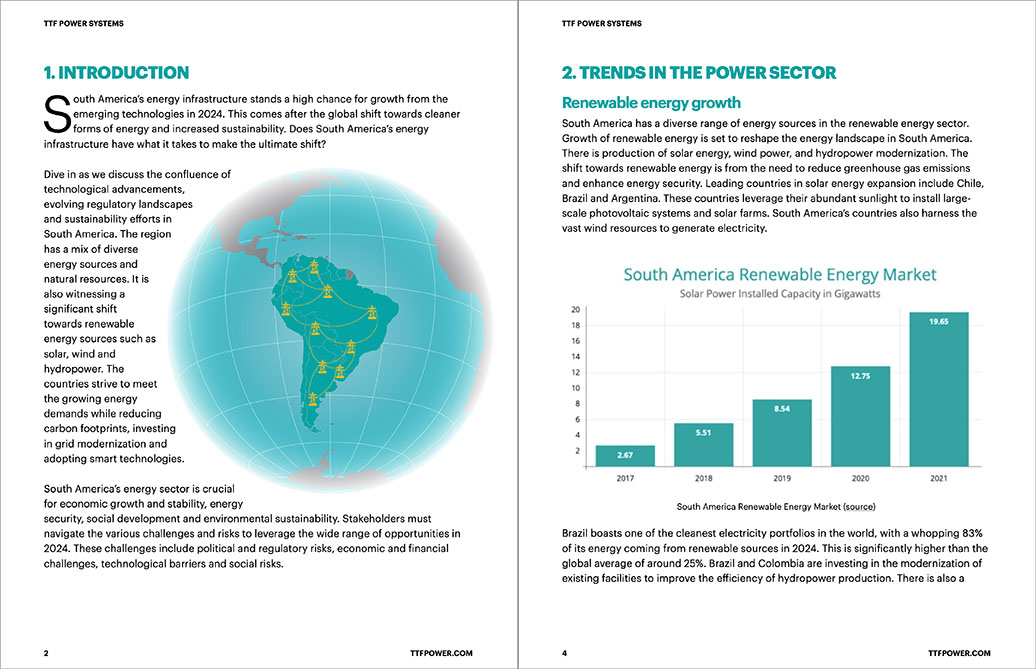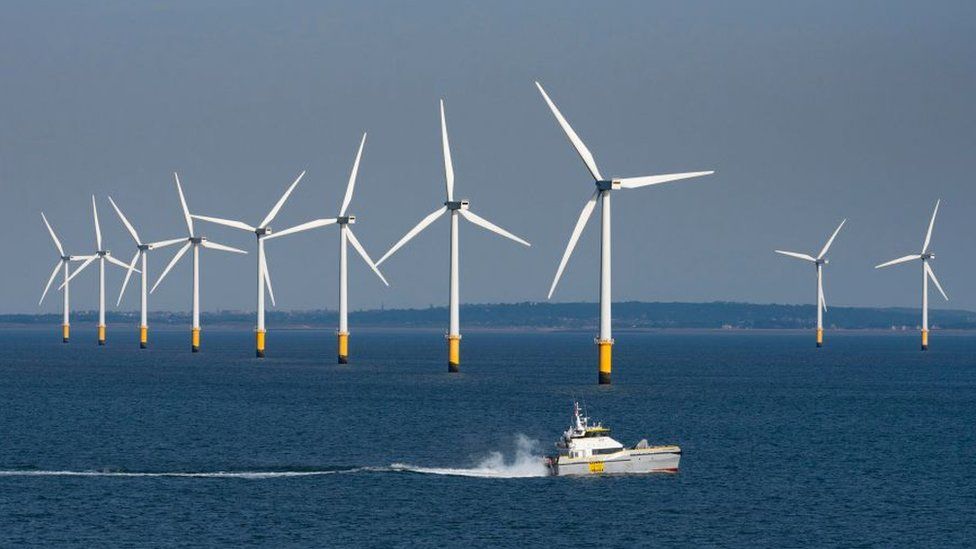South America has a great opportunity to enhance energy infrastructure driven by its abundant natural resources. The region has vast and diverse landscapes with wind resources that contribute to sustainable development. Wind energy is a clean renewable source that can reduce greenhouse gas emissions and dependence on fossil fuels. Most of South American countries boasts some of the strongest and most consistent winds in the world. This makes it a prime region for wind farms and investments. Top producing countries include Argentina, Brazil, Chile, Peru and Colombia. Brazil enjoys 12,528 wind turbines in operation, Chile has 2,997, followed by Argentina with 2.182 and Uruguay with 823. South America as a region accumulates 694 onshore wind farms and 19,649 offshore wind farms.
Benefits of wind energy production in the region
The transition to a wind energy-powered economy promises significant economic and environmental benefits. Energy mix diversification can reduce dependence on fossil fuels and enhance the energy security. It could also attract investments in wind energy infrastructure to stimulate local economies. This is by creation of jobs in construction, maintenance and operation of wind farms. Wind energy is clean and helps reduce greenhouse gas emissions and dependence on fossil fuels. It also reduces air and water pollution and conserves natural resources.

Onshore wind farms in South America
There is a surge in renewable energy adoption in South America. Onshore wind farms are a significant contributor to the region’s energy mix. Key players in this industry include Brazil, Argentina, Chile and Uruguay. There are notable projects such as Oitis onshore wind farm, Patagonian wind farms and integration with hydropower in Chile. Operation of these wind farms need use of power line hardware. This is including insulators that prevent electrical current from flowing to the tower. Such include polymer and porcelain insulators. The following are the factors contributing to onshore wind farms development in South America.

- Abundant wind resources – the region have diverse landscapes with high wind potential. This is including regions such as Patagonia in Argentina, the northern coast of Brazil and desert regions of Chile. These areas experience strong and consistent wind speeds ideal for wind energy generation.
- Environmental advantages – wind energy reduces greenhouse gas emissions compared to fossil fuels. The farms have a smaller environmental footprint and do not pollute water or air.
- Government policies and incentives – South American countries have implemented policies that support renewable energy development. Examples include feed-in tariffs, tax incentives and renewable energy targets. The availability of financing from international organizations ease investments in wind power projects.
- Technological advancements – advances in wind turbine design and efficiency have made wind energy more viable. Development of better energy storage technologies helps mitigate the intermittent nature of wind power.
Offshore wind farms potential in South America
Offshore wind farms provide an opportunity for renewable energy development in South America. The wind farms are taller and larger than onshore ones which results in higher energy production. There are several countries that recognize the potential and are taking steps towards the development. These countries include Brazil, Argentina, Chile, Colombia and Uruguay. This is due to their vast coastlines and high wind potential. By capitalizing on the opportunities and addressing the several challenges, South America can transform its energy landscape. Offshore wind farms provide higher energy production, reduced land conflicts, proximity to coastal demand centers and environmental benefits. The following are the challenges and solutions for offshore wind farms.

- High initial costs – offshore wind farms need significant investment in installation, maintenance and grid connection. Financial incentives, subsidies and favorable financing options can attract investment and reduce financial barriers.
- Technological and logistical obstacles – the harsh marine environment poses challenges for the installation and maintenance of offshore wind turbines. There are innovations in turbine design, materials and installation techniques addressing these issues.
- Regulatory and policy frameworks – clear and supportive policies are important for the development of offshore wind farms. Governments need to establish regulatory frameworks that simplify permitting processes.
- Grid integration – upgrading and expanding grid infrastructure is important to accommodate the integration of offshore wind energy. Smart grid technologies and energy storage solutions can enhance grid stability and reliability. Addressing this needs strategic planning and investment in transmission infrastructure. This will ensure efficient delivery of power from offshore wind farms to demand centers.

